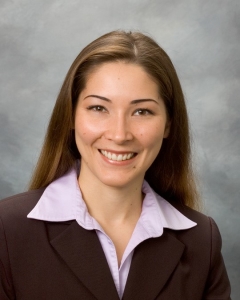By Sigrid K. Asmundson and William J. Priest, Best Best & Krieger.
Nationwide, states are seeing an uptick in voter participation. California’s election officials are now preparing for a turnout surge as the state’s June 7 presidential primary nears.
Over the last three months, more than 600,000 California citizens registered to vote or updated their information online. With interest continuing to grow, the State’s 58 counties will likely face rising costs and increased staffing needs, Secretary of State Alex Padilla wrote in a letter to Gov. Jerry Brown.
Padilla is calling on the Governor, legislators, county and municipal officials to act now.
With the California Elections Code regulating all elections, be they statewide, countywide or local, it is imperative public officials know the basics of state law governing the polls. Below is an overview of California election laws as they pertain to local agencies.
Governing Laws
California’s counties, cities and special districts must conduct regular and special elections pursuant to the state’s Elections Code. If consistent, local codes can supplement the Elections Code. There is an exception to the rule. Charter cities and charter counties may set their own rules trumping state law. Many, however, defer to state law.
Nevertheless, under AB 331, which became law in January 2014, all local jurisdictions consolidating their elections with those statewide are required to follow state and federal law procedures. The measure was introduced after a controversial election in Vernon, a charter city, where ballots deemed valid under state law were disqualified by the City using its charter authority.
“Protecting the integrity of elections by ensuring consistent application of election laws is critical to preserving the public’s trust in our electoral process,” AB 311 author, Assemblymember Cristina Garcia, said in a press release after Brown signed the bill into law.
Election Timing
General election polling dates are set by statute. Each year, elections may be held in June and November on the first Tuesday of the month, following the first Monday. The statewide primary election is held the first Tuesday after the first Monday in June of even years, and the statewide general election is held the first Tuesday after the first Monday in November of even years. Elections may also be held the first Tuesday after the first Monday of March in odd-numbered years, and the second Tuesday of April in even-numbered years. State law provides additional dates for all vote-by-mail (VBM) elections.
Beginning Jan. 1, 2018, the State will mandate that all off-schedule regular elections be altered to coordinate with statewide primary and general elections if voter turnout is 25 percent below the average participation in the last four statewide general elections. With a typically high voter turnout for statewide elections, many agencies may be forced to change election dates.
State rules change when it comes to special elections. Municipalities may call an election outside of statutory dates to fill governing body vacancies, recall elections, initiatives and referendum issues. For example, a special election was held on Tuesday, April 5 for the seat vacancy for California’s 31st Assembly District, made up of the southwestern portion of Fresno County.
Types of Elections
There are generally four types of elections:
- Elections for officers
- Recalls to remove officers from office
- Initiatives to put local law on the books
- Referenda to keep local law off the books
Elections for Officers
Elections of officers can be held at-large, from districts or by districts. The California Voting Rights Act, however, encourages by-district elections. It challenges at-large elections and prohibits them from impairing “the ability of a protected class to elect candidates of its choice or its ability to influence the outcome of an election.” The law defines “protected class” as voters who are members of a “race, color or language minority group” and it aims to guarantee these groups equal representation in elections.
In 2012, Chula Vista voters approved Proposition B — changing the city charter from at-large to by-district elections requiring city council members to be elected by geographical location starting in June 2016. The move was designed to give equal representation to residents in San Diego County’s second-largest city with a population of about 256,000. The mayor and city attorney will remain elected at-large.
Municipal candidates seeking office have a tight election deadline schedule. Once a municipal election is called for and notices published, candidates have 25 days to gather voter nomination signatures and file statements. The Federal Voting Rights Act requires these statements and ballot materials be translated to accommodate minority language groups numbering more than 10,000, or 5 percent of the total voting-age residents. Translation and related costs may be (and often are) paid by the candidate. Filing periods can be extended if an eligible incumbent opts out of a race.
When filling vacancies, governing bodies can appoint a member or call for a special election.
Election laws give voters the power to elect and remove an elected official.
Recalls
Under state law, voters cannot recall an officer if:
- They have not held office for more than 90 days during the current term,
- Won a recall election within the last six months, or
- Has fewer than six months left on term.
The recall process is one heavily regulated by the California Secretary of State. A Notice of Intent to Recall starts the recall process. Proponents of a recall must serve a copy to the targeted officer, publish the notice and file it with the local elections official within seven days of serving the targeted official. Officials hit with a recall notice have an opportunity to respond to the notice within seven days. The official must limit their response to 200 words. While this is a voluntary step, it is an opportunity for the targeted official to offer an answer in their defense in order to oppose the recall attempt.
With strict deadlines and processes to follow, recall elections rarely go past this stage. Rather, this tactical measure is often used as an inexpensive, effective way to get an elected official’s attention.
Initiative and Referendum Measures
Initiative measures can be petition-driven and started by direct-voter action or be council-driven and commenced by a municipal body.
For voter-directed action, after filing notice and receiving a ballot title and summary for the initiative, proponents have 180 days to gather signatures — each of which must be verified by elections officials. Petition signers can withdraw their signature at any time before filing. If the filing deadline is missed, the petition is void. Once filed, elections officials have 30 working days to verify petition sufficiency and signature validity.
The council’s next steps depend on the number of registered voters signed onto the petition.
If more than 10 percent of voters have signed the petition, the council can: adopt the measure without alteration, submit the measure to voters at the next regular election or call a special election. If 15 percent or more of registered voters have signed the petition and the petition specifically requests a special election, the council must either adopt the measure without alteration or call a special election.
With council-directed initiatives, the city council simply orders the measure be placed on the ballot (typically by ordinance or resolution). There is no need for notices or petitions. Such measures are either required by law or may be aimed to gain political support for a controversial ordinance. Voter approval is legally required for initiatives regarding tax increases, charter amendments and council term limit changes.
Referendum is a much simpler process. With a short deadline, 30 days after an act’s adoption, referendum proponents go straight to the petition process. If at least 10 percent of the city’s registered voters sign the petition —or 25 percent if the population is less than 1,000 — the council may repeal the challenged act or set the measure for a vote in a regular or special election.
Elections and Public Funds
State law prohibits public agency officers, employees or consultants from expending or authorizing any local agency funds to support or oppose a ballot measure or candidate campaign.
Public funds may not be used to purchase ads promoting a measure or to produce and disseminate materials advocating a ‘yes’ or ‘no’ vote on the measure. Agencies may, however, use public funds to identify programs or services that could be cut if a ballot measure passes, and state — on record — the city’s position regarding the measure at a regularly scheduled public meeting.
However, city officials and staff can, on their own time and at their own cost, advocate a position for or against a candidate or measure, so long as it is clear they are acting in a personal capacity and not at the city’s expense. Staff are urged to talk with their agency’s attorney to better understand these rules if they intend to actively participate in a local campaign.
For an in-depth breakdown of California’s elections laws, view Best Best & Krieger’s free webinar, Election Law Primer.
[divider] [/divider]
 William J. “Jim” Priest is of counsel to Best Best & Krieger. Based in the firm’s Ontario office he is a member of BB&K’s Municipal Law practice group and serves as special counsel to a number of public agencies. . Jim focuses on public finance, elections, land use, ethics, and public works law and regularly advises on issues regarding the Brown Act, the Public Records Act and similar laws. He can be reached at William.Priest@bbklaw.com.
William J. “Jim” Priest is of counsel to Best Best & Krieger. Based in the firm’s Ontario office he is a member of BB&K’s Municipal Law practice group and serves as special counsel to a number of public agencies. . Jim focuses on public finance, elections, land use, ethics, and public works law and regularly advises on issues regarding the Brown Act, the Public Records Act and similar laws. He can be reached at William.Priest@bbklaw.com.
 Sigrid K. Asmundson is part of Best Best & Krieger’s Municipal Law practice group in Sacramento and is of counsel to the firm. She serves as special counsel to multiple public agencies providing advice on various aspects of governing, including the Brown Act, conflict of interest and election laws, redevelopment agency dissolution and disclosure of public records. She can be reached at Sigrid.Asmundson@bbklaw.com.
Sigrid K. Asmundson is part of Best Best & Krieger’s Municipal Law practice group in Sacramento and is of counsel to the firm. She serves as special counsel to multiple public agencies providing advice on various aspects of governing, including the Brown Act, conflict of interest and election laws, redevelopment agency dissolution and disclosure of public records. She can be reached at Sigrid.Asmundson@bbklaw.com.





